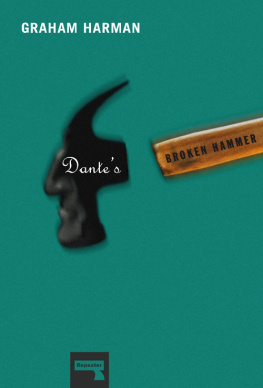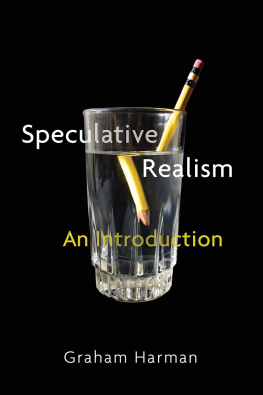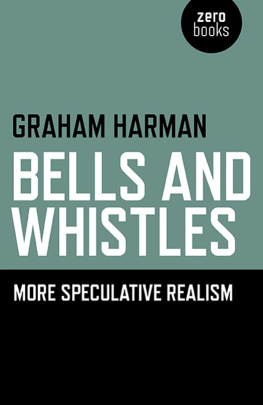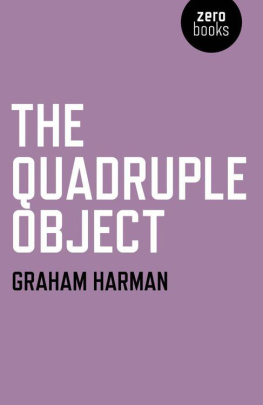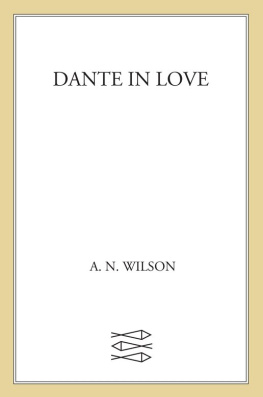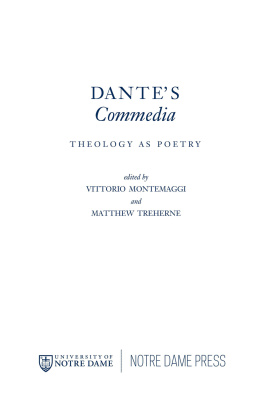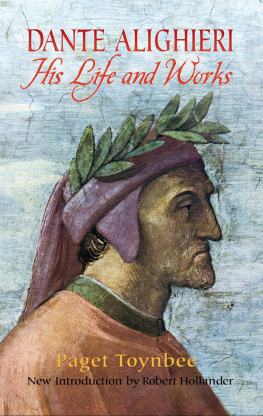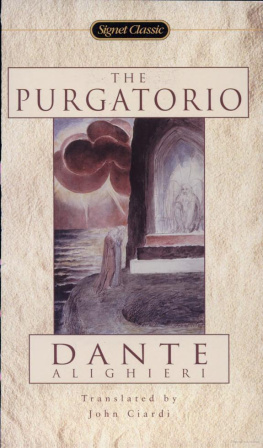Dantes Broken Hammer
Graham Harman
Dantes Broken Hammer
The Ethics, Aesthetics, and
Metaphysics of Love
Contents
Introduction
As an undergraduate at St Johns College in New Mexico and Maryland, I was intensely studious but not very successful, finishing in the lower half of my class at an institution I still revere. Only two pieces of work during this time were of lasting importance for my intellectual development, both of them written during the first two years of study. The first was a 1987 essay applying Jos Ortega y Gassets theory of metaphor to a poem by Paul Verlaine. (Ortega 1975; Verlaine 1961) The themes of that essay reached mature form in Guerrilla Metaphysics (Harman 2005), and metaphor has remained central to object-oriented philosophy ever since. The second relevant work was my sophomore essay from March 1988, described accurately enough by one of my teachers as a phenomenological meditation on Dantes Divine Comedy." (Harman 1988) Nearly three decades later, though the style of that essay consigns it to the status of juvenilia,the ideas it contains still strike me as important. Nonetheless, they have never appeared in any published work. The present book is an attempt to do justice to those ideas by integrating them with what I have learned in the ensuing years.
In what follows, we will begin by reviewing the details of Dantes journey into the world after death, and end by discussing the implications of this journey for philosophy. The first part will be easy for any reader, the second perhaps less so. Thus I will now try to explain the philosophical stakes of this book on the greatest poet of the medieval era. From the outset, my thoughts on Dante were guided by the famous concept of intentionality. This scholastic term was revived by Franz Brentano in the 1870s; it later served as the backbone of the phenomenological movement, and might seem long exhausted by the thousands of books and articles devoted to it. (Brentano 1995) Intentionality is simply the notion that every mental act is directed at some object: in every moment one wishes for something, loves something, perceives something, judges something to be true or false. Long familiar though it is, this concept has been misinterpreted in two basic and opposite ways. First, a realist deviation has claimed that intentionality means we leap beyond the confines of the mind and make direct contact with something in the outside world. This ignores Brentanos definition of intentionality as aimed at an object immanent in the mind, as Barry Smith notes against its misreading by the important analytic philosopher Michael Dummett. (Smith 1995) For we also intend objects that have no existence outside the mind at all, including centaurs and other hallucinations, along with abandoned scientific notions such as the discredited planet Vulcan. The relation between the immanent objects of experience and those that might exist outside the mind was left unclear by Brentano, and this very issue sparked a fateful dispute between his great Polish disciple Kazimierz Twardowski (1977) and the young Edmund Husserl (1993).
Second, there is an idealist deviation that follows from Husserls own work, one later ratified by Martin Heideggers agreement that the old realism/idealism dispute is a time-wasting pseudo-problem. This line of thought holds that phenomenology is not guilty of idealism, since we are always already outside our minds in intending objects. It differs from the realist deviation in its contempt for any nave realism that insists on the existence of a real world outside the mind. Thus it claims to offer a third way, lying beyond realism and idealism. Husserl insists that when he holds that everything that exists is in principle the correlate of an intentional act, this is not an idealism. But note that his famous maxim to the things themselves does not mean to the things-in-themselves in the Kantian sense of things lying beyond all possible human access. Husserl regards this notion of an object exceeding all intentionality as patently absurd. Heidegger ought to have recognized the error of his teachers claim, since his own further step consists precisely in challenging any direct theoretical access to the real. Yet Heidegger is largely content to shift our means of access to reality from theoretical contemplation to the practical use of equipment and the disclosive power of moods. Thus human being (or Dasein) remains at the center of Heideggers thinking, despite his stated awareness that Kants thing-in-itself was shortchanged by German Idealism (Heidegger 1962, 252253) and his increasing turn towards a passive awaiting of the sending of Being itself, as opposed to any industrious human efforts to clarify reality. He tends to hold that only Being withdraws from human access; individual beings are exhaustively given in our various dealings with them. There are obvious exceptions to this tendency in his meditation on artworks and on the thing more generally, but even in these cases he is concerned with the way the thing withdraws from Dasein; true to his Kantian heritage, Heidegger teaches us nothing about relations between non-human objects and other non-human objects, which he too seems content to leave to a science that, in his own harsh opinion, does not think. Thus Heideggers realism is only partial, and makes an imperfect advance beyond Husserls treatment of the real as a correlate of human thought.
The Speculative Realism movement was launched precisely in response to this reduction of reality to a correlate of thought. (Brassier et al. 2007) Quentin Meillassouxs useful term correlationism was meant to critique a vast range of philosophies that wrongly nullify the realism question by claiming that the existence of things as correlates of thought is all the reality we need. (Meillassoux 2008) Yet this very critique has prompted most continental philosophers to reject Speculative Realism immediately; they simply repeat the joint Husserl-Heidegger claim that things are directly given to humans either through judicious pursuit ofphenomenological insight (Husserls case), or analysis of pre-theoretical comportment (Heideggers case), both cases making it foolish to speak of things beyond their correlation with humans. It also extends the general prejudice of post-Kantian philosophy Alfred North Whitehead (1979) is the major exception that the human-world relation is the sole genuine topic of philosophy. Object-object relations are left exclusively to the natural sciences, while the rest of us are supposed to deal with subject-object relations alone: a doomed division of labor now rejected by cognitive science and neurophilosophy during their increasingly assertive forays into a human realm that continental philosophy had tried to reserve for itself.
Despite my enthusiastic background in phenomenology and great personal fondness for this school, I agree with both Meillassoux and Tom Sparrow (2014) that Husserl, Heidegger, and their successors do not avoid reducing reality to a correlate of thought. Even when phenomenology uses intentionality as an adhesive that glues together subject and object, it remains little better than a pure modern subject-object dualism. For it would also need to treat each of these terms in its partial autonomy from the other, and must acknowledge further that human thought is just one of countless different entities in the universe, rather than a full fifty percent of the cosmos. Beyond this, intentionality is not just a thought-world adhesive that protects Husserl with a convenient alibi for idealism. Intentionality has important additional aspects that I will later call selective, unstable, and composite. In what follows, I will show how these three terms match up loosely with the domains of ethics, aesthetics, and metaphysics, which in turn will structure my interpretation of Dante.
Next page
